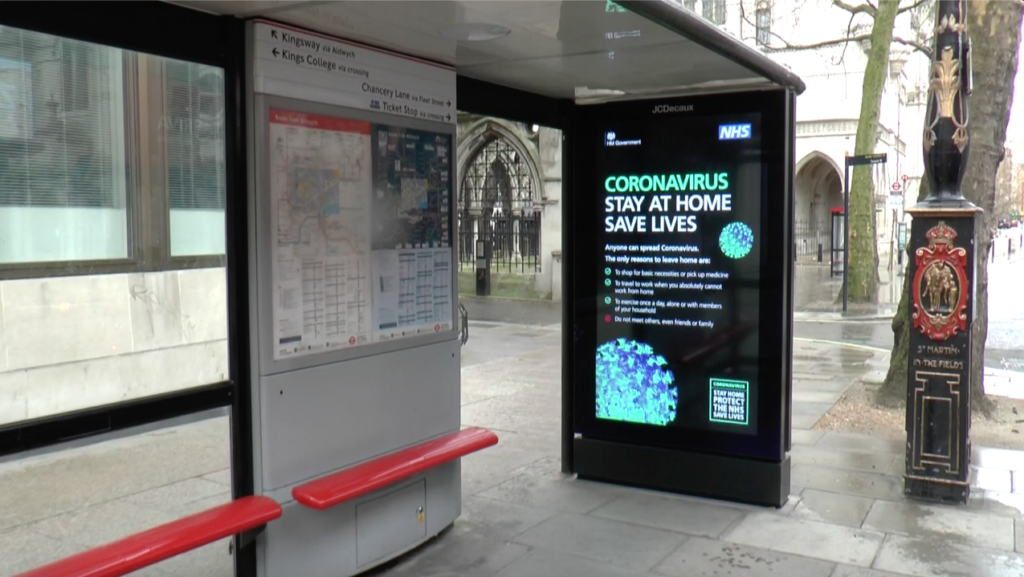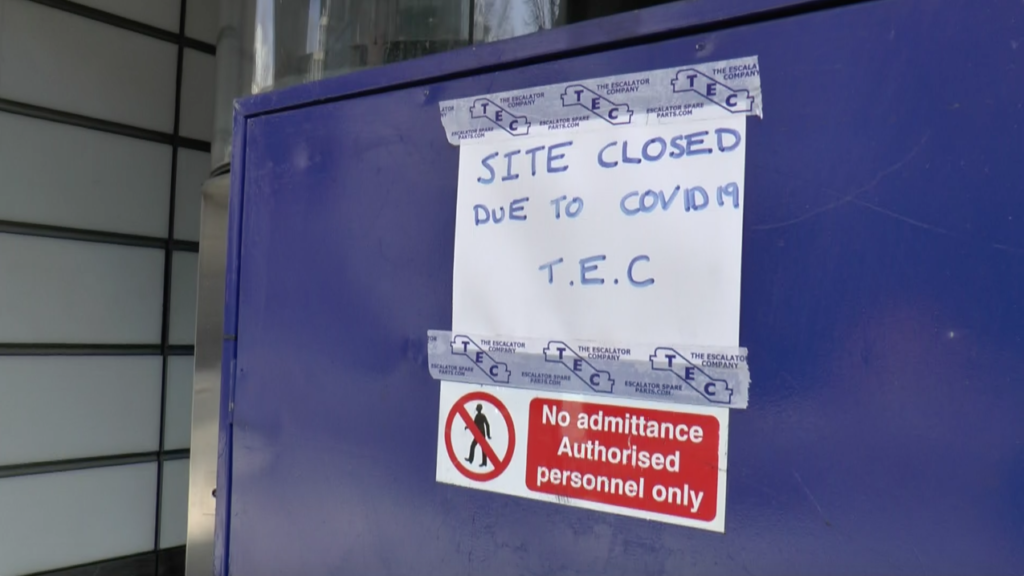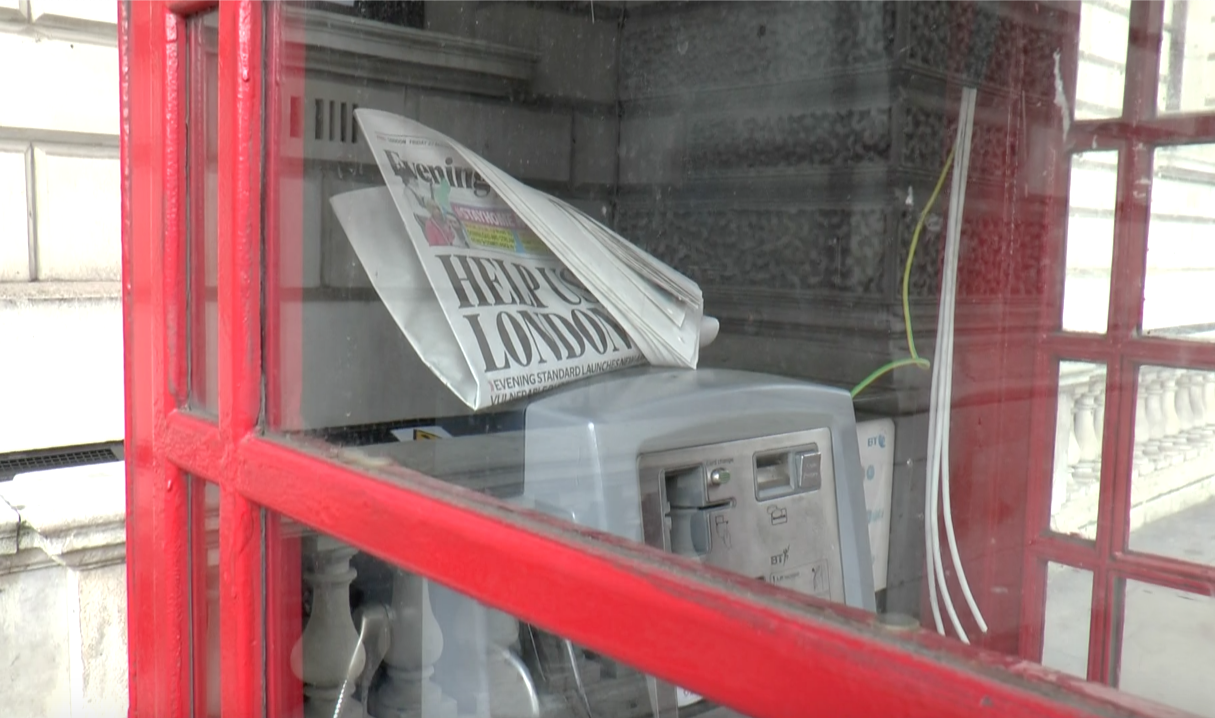Comparing the coronavirus pandemic to the mass-mobilisation of World War II has already become a tired cliche. One thing it has conjured, however, is a mass-mobilisation of automation. In hospitals, machines disinfect the room by emitting UV rays. Robots shuttle supplies to the immunocompromised. Factory automation is repurposed to produce face masks. Contactless payment is encouraged over cash. Video conferencing technology conveys birthday greetings, medical information and jury verdicts.
“Anytime there’s a crisis, whether it’s a war, or a pandemic or something, it has historically pushed technology farther,” said Julie Carpenter, roboticist and research fellow at California Polytechnic. “Which is terrible in a lot of ways, but it is true for a lot of reasons — one is necessity”.
Typically, a recession is hardly the time for investment — companies are too busy keeping their operations afloat to waste resources on discretionary spending. Investment in automation, however, has taken priority. One Ernst & Young survey taken early in the pandemic reported over one-third of respondents were already accelerating their automation efforts. The International Federation of Robotics (IFR), a non-profit, has also been tabulating all the ways automation has aided the coronavirus fight.
Herd immunity
The IFR gives several reasons for this acceleration in automation, based on the kinds of demand members have fielded their clients. One is the simplification of supply chains — now that the vulnerabilities of a global, outsourced workforce have been exposed, homegrown manufacturing has come back in vogue. In developed countries, where worker wages are higher, manufacturers are more likely to roboticise.

Automation is also hygienic. “Robots are naturally immune to coronaviruses and assist workers without any risk of infection,” said Carsten Heer, an IFR spokesperson. “This has already been used to keep production running.”
One can also see it from a cynical perspective. In preparation for a second- or third-wave, automation can be seen as a “future-proofing mechanism for maintaining production, if labour is forced to demobilise,” said Kyle Lewis, co-director of the think tank Autonomy, adding that this was the “technological aspect of automation”. “However, the ideological aspect of it concerns ‘never letting a good crisis go to waste’”, Lewis said, allowing companies to justify lay-offs to workers and unions.
Out of office
In the past few months, automation has joined a long list of changes brought about by the pandemic, including greater relief spending, fewer carbon emissions and a nation of desk-workers learning how to work from home. This forced experiment has been a boon for armchair speculation.

“There are several different future scenarios, each of which are possible, and which deserve our attention,” said David Wood, chair of London Futurists. One scenario, Wood said, is a growth in inequality. “So is an acceleration towards a post-work world.”
John Maynard Keynes may have been the first to envision this world when he boldly declared that one hundred years hence, technological progress would be such that we’d only have to work 15 hours per week. The rest of the week would be spent in leisure, freeing up “our further energies to non-economic purposes,” he wrote.
That proposition was probably laughable in 1930, at the dawn of the Great Depression, and has remained laughable into the 21st century — until now. Suddenly, a spate of academics and futurists have revived this idea of a high-tech world free of economic cares, churning out a new batch of speculative non-fiction: Martin Ford’s Rise of the Robots, John Danaher’s Automation and Utopia, Daniel Susskind’s A World Without Work, Aaron Bastani’s Fully Automated Luxury Capitalism and the aforementioned Wood’s Sustainable Superabundance. And there’s still more to come: Post-Work by Will Stronge and Helen Hester and A World Beyond Work? by Harry Pitts and Ana Dinerstein, both of which will be published in 2021.
While most of these were written ahead of the coronavirus pandemic, the crisis has certainly given them a boost. “I think it is sensible to assume that the pandemic will accelerate certain trends that were already manifest in society and workplaces,” said one of the aforementioned authors John Danaher, lecturer at NUI Galway, in an email.
Companies previously reluctant to adapt are now doing so to stay afloat. “The deeper the crisis, the more productive you will need to be in the company to survive that crisis — and that’s an incentive to accelerate the transformations that you knew you needed to do someday,” said Laetitia Vitaud, an HR consultant and writer on the future of work. These transformations don’t have to be cutting-edge — most of it will already have been invented, like automated accounting software. For companies already in a state of flux, what once may have been a pain to implement is now no more difficult than having to transition to a fleet of remote human accountants. “It doesn’t mean you’ll get rid of all your accountants,” Vitaud said. “You’ll still need human accountants, but you may have fewer, and use better equipment.”
Each of these small changes can lead to a net loss of employment, something that in aggregate, Keynes regarded as liberating, but for many, is alarming. One oft-cited study by researchers Carl Benedikt Frey and Michael Osborne puts 47% of US jobs at risk of automation.
It’s worth noting, however, that while the study may have been motivated by Keynes’ prediction, “I do not think we are about to replace work altogether,” Frey said. “There are still many jobs that cannot be done by machines that are in demand.”
Robopocalypse Now
History has shown us what happens when labourers are pitted against labour-saving technology — the etymology of the word “luddite” is a prime example. “Robots will change some jobs and eliminate some jobs, as any huge technology has historically,” Carpenter said, naming the cotton gin, industrial weaving machines and the printing press as examples. “And integrating such a widespread, everyday thing, yes, some jobs will be eliminated.”
What that doesn’t mean, however, is that a distrust in technology is inherent — in fact, the fear of robots may be a peculiarly Western hang-up dating back to our Christian foundations. “What is a basis for how we would interact with artificial life, if you look at the Bible? Adam tried to make life out of his rib, and he did, according to the Bible, and literally all hell broke loose,” Carpenter said. “This is a story that is telling you that there are issues if you try to sort of play god, in effect.” It’s a fear of artificial life that extends to folklore — Frankenstein, Pinocchio, Terminator, Bladerunner.

Japan, on the other hand, is rooted in Shintoism and Buddhism, where “creating an object, or a thing, or even something that resembles artificial life is not this choice fraught with danger,” she said. “It means that you are creating something that will be part of the world and has a place.” In terms of cultural reference, Carpenter points to Astro Boy, in which an android is the hero. Perhaps it’s no coincidence that Japan has over 300 robots per 10,000 manufacturing workers, according to the IFR (compared to the UK rate of 91).
The fear that technology can outwit us, meanwhile, may simply be giving it too much credit. “The bottom line is, we control the technology. We create the technology. We can take out its batteries and unplug it, quite literally,” Carpenter said. “It doesn’t have ‘Skynet’ motivations.”
Even artificial intelligence does not actually think like a human. “As a cognitive scientist, I’m always careful not to say ‘these models are like a brain’,” said Marlene Staib, an engineer at Papercup AI, which translates video. Using her company’s tool as an example, the best human metaphor may not be learning the dictionary definitions of foreign words, Staib said, but hearing it over and over again in different contexts, until “after a while, you’ll know what this word means, without anyone explicitly telling you what it means.”
As such, some linguists doubt there will ever be a flawless translation tool — there will always need to be a ‘human-in-the-loop’. “There’s a view of translation where you first have to understand the meaning, and then codify it again in another language, rather than going directly from one to the other,” Staib said, who codes AI from a language background. “In German you wouldn’t say ‘I love you’ to your parents or your friends, you’d just say it to your partner. [AI] would probably just translate it literally and not know about this intricacy.”
The labour-saving fallacy
In a 1954 report on the impending threat of automation, famous union leader Walter Reuther recalled a conversation with a Ford Motor executive during a tour of their Cleveland, Ohio plant. “How are you going to collect union dues from these guys?” the executive said, gesturing to some newly-installed machines. “How are you going to get them to buy Fords?” Reuther replied.
For automation-sceptics, Reuther’s retort gets at the heart of their pessimism — what’s the point of all this labour-saving technology when it leaves you nothing to spend in your leisure? While automation may create wealth, those whose labour has been saved are not the ones receiving the wealth — an uneven distribution of productivity gains referred to as “the great decoupling”.

Automation can wreak havoc on equality another way. In a landmark 2003 labour market study, researchers David Autor, Frank Levy and Richard Murnane observed that when technology replaces jobs, it tends to be those with middle-incomes; when technology creates jobs, it’s at the very top or bottom of the payscale.
Whether it’s manual or cognitive labour, what these middle-income jobs have in common is that they’re routine and thus, easy for a robot to replace: machinists, truckers, data entry clerks. Some may even be considered ‘high-skill’, “for example, some legal jobs, some accounting jobs are very affected by that risk,” Vitaud said. “They’re jobs that relied on qualifications, but some of those tasks are completely automatable now.”
The highest- and lowest- paid jobs still left untouched, meanwhile, tend to be non-routine, whether that’s the subjective decision-making of a consultant or the varied array of tasks conducted by a cleaner. If a robot takes your job and you’re educated you may rise to a higher-paying job, everyone else, however, is demoted in skill and salary. In short, the study concluded, technology may create new jobs, but these jobs are polarised.
Meanwhile, the same workers yet untouched by automation are also the most impacted by the pandemic. According to a study by the RSA, low-wage workers including “cleaners, retail sales assistants and several low-skilled manufacturing or warehousing roles” — non-routine manual labour — are also the least likely to be able to work from home, putting them at a higher risk for lay-offs, furlough or coronavirus infection.

A world without scarcity
In Sustainable Superabundance, Wood theorises a near future in which technology will be so efficient and wealth so abundant that the price of goods will approach zero. For those that remain somewhat scarce, “the answer is via a dividend distributed from the shared commons of humanity’s accomplishments”, he said.
Some may argue we’ve already reached the point where wealth is so abundant that it shouldn’t have to be exchanged for labour — especially if automation is eliminating that labour. Last year, this idea of a universal basic income came to fame under US presidential candidate Andrew Yang, who ran under the platform of a monthly “freedom dividend” paid out to every American, employed or unemployed, to mitigate the impact of automation.
Yang may have dropped out of the race, but if the pandemic is any indication, the basic income idea was not some passing fad. Last April, over 100 opposition MPs called for universal basic income as pandemic relief. A World Without Work author Daniel Susskind, previously a sceptic, has since backed UBI in an editorial in the Financial Times.
The temptation may lie in its simplicity: technology creates wealth, UBI spreads it. Lewis, however, cautions against this “silver bullet” narrative. “By itself, a universal basic income will not end work altogether or be a panacea for curing technological, or for that matter, all forms of inequality.”
In a socialist society, coupled with strong trade unions, “it’s possible to imagine,” Lewis said. On the other hand, a basic income could also be used as a replacement for all other functions of the state, funneling wealth to shareholders “via the vehicle of automation”.
In the combat of inequality, automation may be a red herring. Staib, while noting such definitions are more philosophical than technical, still refers to automation as merely a tool. “My mother is always seeing the potential in the technology and what it can help us achieve in making humans’ lives easier, basically — all humans’ lives easier,” she said. Staib’s mother comes from a farming background where there’s a real incentive to automate, “so life isn’t so hard on your bones”.

